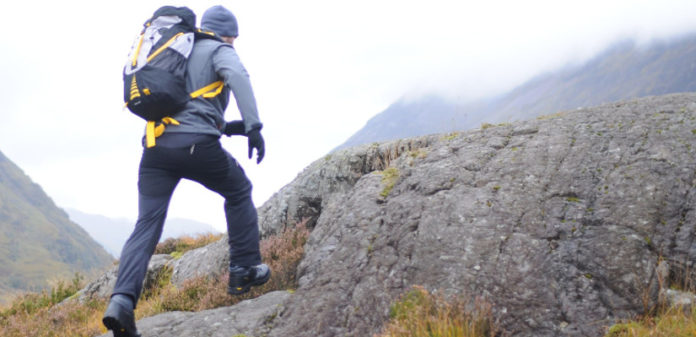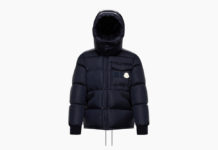If you’re looking for a terrific low-impact workout, consider hiking. Unlike many outdoor sports, it’s one of the few adventures that don’t demand a lot of prior training. Whether you’re a seasoned athlete or just someone who’s looking for an exciting expedition, hiking should be an activity found on your bucket list! It also doesn’t hurt how this form of exercise is packed with tons of health and mental benefits, as well.
But despite how simple hiking may look like in pictures and on social media, they’re a lot more dynamic and unpredictable. Contrary to walking on a paved path or running on a treadmill machine, how easy hiking can turn out is dependent on several variables. Interestingly, for you, these variables are precisely what makes hiking fun and enjoyable. If you’ve never traversed mountainous hillsides or rocky uphill trails, this article’s for you.
Here Are The Top Things To Remember On Your First Hike
Choose the right trail that suits your health level and fitness capacity. As much as we’d like to believe hiking is really just glorified walking, that really isn’t the case; at least not all the time. Remember that even the most experienced hiker has limits. Look for a destination that doesn’t demand a challenging hike that runs an overwhelming stretch of distance.
Depending on where you live, you could have numerous choices or none at all, so look up destinations to hike online. Read reviews and see if there are guides and travel agencies that accommodate trips to where you want to hike. If it’s your first time, choose to trail a path that you think is easier to conquer than immediately challenging yourself with farther, more challenging trails.
-
Familiarise The Destination And Do Your Research
Yes, you’ve seen the Instagram pictures, but do you know what possible bugs and wild animals you could be encountering along the way? How do the weather and the temperature change as you near the pinnacle? Will there be a river you’re braving? How deep will it be? By any chance, will there be tribes you’re going to encounter? What are they like? How far is the nearest medical center? Will there be mobile phone coverage? These are all critical things to consider. While it may seem like just a walk, hiking isn’t mainly a walk in the park.
-
Assess The Weather
Track weather updates as your hiking date nears and nears. Know that the weather will help determine what you’re bringing with you and what you should be wearing. If a storm is brewing or a typhoon is about to hit the neighboring areas and communities of where you’re hiking, ditch the idea altogether and move it some time else. There are far too many stories of tragedies that happen when hikers push through despite apparent warnings.
-
Always Invest In The Right Shoes
There is a long list of things you wouldn’t want to bring when you hike. One of them would be bad shoes. But how would you define bad shoes? Obviously, this is subjective, and depending on what your feet find comfort in, answers may vary. But a general response to this is that bad hiking shoes are shoes that aren’t designed for long distances of walking, let alone walking on rocky and muddy soil. Don’t just look for aesthetically appealing shoes. Style is great, but when you walk for hours, you’re going to want to prioritize comfort.
Find brands that are designed to augment hiking. Boot Bomb, for instance, is a perfect resource for shoes that are made to conquer long and memorable hikes. Of course, the same thing goes with your entire get-up. How many layers of jackets, socks, and shirts you should wear is dependent on where you’re going. Again, your safest bet for this is the internet. Look up reviews online and take into consideration what past hikers are saying.
-
Bring The Essentials
This list of top 10 necessities is something you’ll want to keep in mind when going for your first hike. These are things you should bring with you to stay protected outdoors. Also, you’ll be surprised how, many times, the remote idea of needing to spend the night at the pinnacle might not even be so isolated. That being said, you must be prepared and have what you need. At the end of the day, you’re not just packing essentials on a list.
You’re thinking of your own comfort and welfare. Whether it’s a simple comforter that should act as a picnic blanket or an actual sleeping bag, it’s up to you. However, there are non-negotiable items that should consistently be present regardless of how far and challenging your hike could be. Sunscreen and sunglasses are classic examples. Other things are repair tools and kits, extra food, insulation, emergency shelters, and of course, water.
-
Don’t Overpack
While it’s essential to be prepared, it’s also vital not to overpack. Finding the balance between the two can be difficult, especially if you’re a natural worrier. The secret here is to carry only what your body can keep up with. For example, if you’re more comfortable and able to move around with only one backpack, then find a workaround. Try to fit all that you need in that backpack and be smart with how you pack things. Often, the secret isn’t always in what you bring, but how you pack, as well.
-
Inform Friends That You’re Hiking
A friend or a family member who isn’t part of the trip must know where you’re headed. Tell them when you expect to finish your hike and establish that you’re bound to communicate with them at a particular hour. Should your silence exceed that “curfew,” allow them to call the authorities. Still, it’s best to be practical and let the “worry time” be multiple hours later than when you intend to be finished. Delays due to sore bones, weather issues, or the dire need to rest longer are typical and shouldn’t be a cause for panic.
If possible, bring emergency devices such as SPOT trackers, on top of your regular smartphone. You’ll never know how handy these things are until you need them.

















